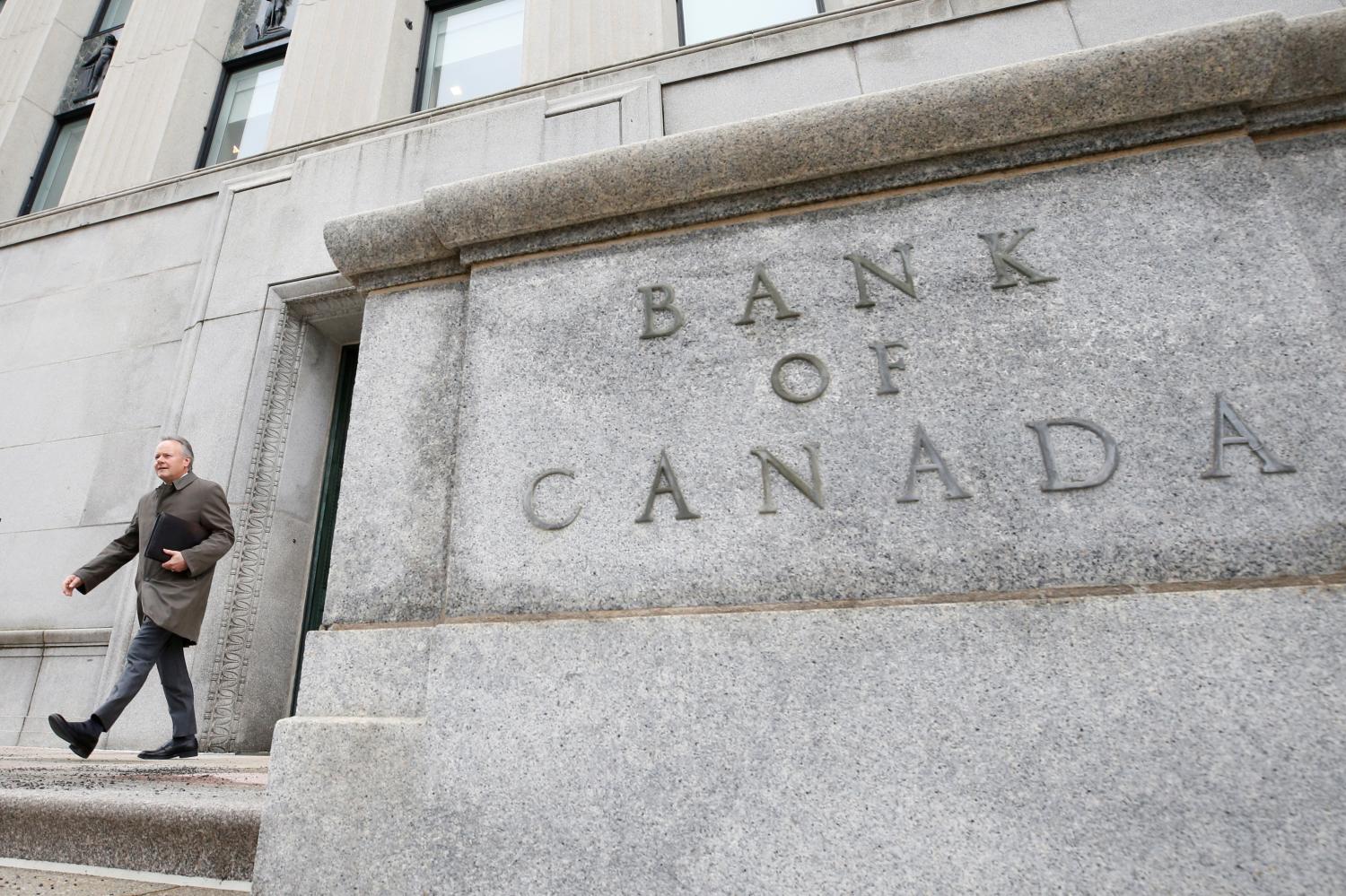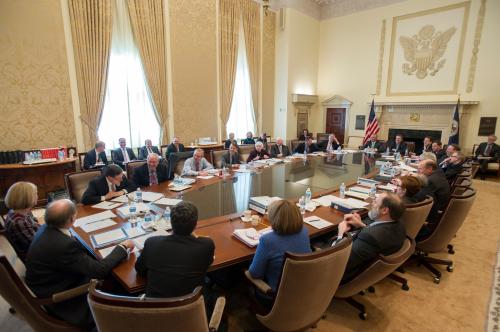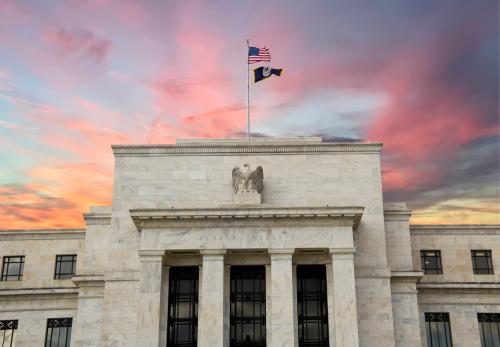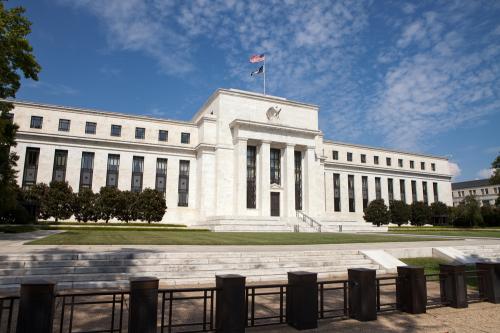In 1991, the Bank of Canada was the second central bank – the Reserve Bank of New Zealand was the first – to adopt an inflation target as its primary monetary policy strategy, replacing earlier frameworks that relied on the exchange rate and the money supply. The target is set jointly with the government, and the framework is reviewed every five years. The following account of the Bank of Canada’s experience is drawn from remarks by John David Murray, a 34-year veteran of the Bank of Canada who was deputy governor from 2008 to 2014, made at the Hutchins Center conference.
When inflation targeting came to Canada, it was the government not the Bank of Canada that proposed it. Why? Three possible explanations come to mind. First, perhaps the government thought it was a fundamentally good idea. Second, the government was in the process of introducing a new goods and services tax, which would boost headline inflation significantly. This was coming at a time when the government was also renegotiating the contracts it had with most of the unions in the federal civil service. The introduction of an inflation target might serve as a buffer, therefore, helping to temper wage demands. Third, it might have been a preemptive move. The Bank of Canada had started on a very aggressive policy track aimed at realizing the full benefits of price stability, which I know isn’t anything new for a central bank. But this was presented to the public in a very direct and determined way. Although no numerical target was given, when asked by a journalist what this might mean, the bank was reported to have said that for inflation: “Four is not as good as three. Three is not as good as two. Two is not as good as one, and one is not as good as zero.”
The bank for its part was very receptive to the idea of an inflation target. However, it was less enthusiastic about the way the government wanted to go about it. The government wanted to aim for a relatively high target rate, around 3 percent and was thinking of something rather short term. The bank’s reaction was that if an inflation target were to be introduced it had to be meaningful and it had to be long term. Ultimately the bank’s view prevailed and the inflation target was announced in a joint press release from the government and the bank in 1991. It set an inflation target of 3 percent for 1992, going down to 2 percent in 1995, and with a 1 percent band to either side of these targets. Perhaps most interesting, this was regarded as only a beginning: Five years hence, this issue was to be revisited with a strong presumption that the 2 percent target would go lower. The thought was that after five years’ experience, the authorities would have a better sense of the optimal level of inflation, reset the target accordingly, and then that would be it. The planned 1995 renewal was not seen as the beginning of an ongoing process.
Things did not go quite as planned. In fact, the target was renewed in 1993, two years ahead of schedule, and has been renewed five times since. It is up for renewal again in 2021.
Despite the subsequent reviews, there has been no material change in the framework since 1993. The inflation target is currently defined as the “2 percent, the midpoint of a 1 percent to 3 percent inflation-control range.” The wording around the targets has changed, however. Instead of talking about “reducing inflation and reaching price stability” as the bank originally did, it now talks about “low, stable and predictable inflation” as its objective.
The main reason the target hasn’t changed is that the economy seems to have performed exceptionally well under the 2 percent inflation target – indeed better than expected. This set a rather high bar for doing anything adventurous in subsequent renewals.
 What’s the point of a regular renewal process if you don’t change anything? The answer to this is threefold. First, it is a critical part of the bank’s accountability and its responsibility to Canadians. Second, if the renewal was presented as a once in a lifetime event, it might lack credibility. People would correctly note that few things last forever. Any reopening of the framework that was contemplated in future years would generate unnecessary uncertainty and concern. If there is a regularity to the renewal process, however, one can diffuse a lot of this misdirected excitement and potential misunderstanding. Third, the regular renewal is seen as a deliberate and transparent mechanism with which to engage stakeholders. When the Bank of Canada renews the agreement with the government, it isn’t the product of secret discussions. The Bank of Canada is very careful to lay out the issues it proposes to address as well as any changes that might be considered, and to invite feedback from the public, the government, and academics. This transparency is important in terms of credibility and buy-in—a way to promote public awareness and understanding. It’s also a driver for a more focused research effort within the bank. Although the main features of the framework have remained unchanged after six renewals, something new and valuable has been learned on every occasion.
What’s the point of a regular renewal process if you don’t change anything? The answer to this is threefold. First, it is a critical part of the bank’s accountability and its responsibility to Canadians. Second, if the renewal was presented as a once in a lifetime event, it might lack credibility. People would correctly note that few things last forever. Any reopening of the framework that was contemplated in future years would generate unnecessary uncertainty and concern. If there is a regularity to the renewal process, however, one can diffuse a lot of this misdirected excitement and potential misunderstanding. Third, the regular renewal is seen as a deliberate and transparent mechanism with which to engage stakeholders. When the Bank of Canada renews the agreement with the government, it isn’t the product of secret discussions. The Bank of Canada is very careful to lay out the issues it proposes to address as well as any changes that might be considered, and to invite feedback from the public, the government, and academics. This transparency is important in terms of credibility and buy-in—a way to promote public awareness and understanding. It’s also a driver for a more focused research effort within the bank. Although the main features of the framework have remained unchanged after six renewals, something new and valuable has been learned on every occasion.
Some have argued that if the market thinks the inflation target could change every five years, there’s a chance inflation expectations might not be well anchored. However, there’s no evidence of this. Some have also suggested that these regular reviews might invite unhelpful interference from the government – and that’s true, there’s a risk. But the government has ultimate responsibility for monetary policy in any case. According to legislation introduced in 1967, the government has the power to issue a directive to the Bank of Canada if it is ever unhappy about the conduct of monetary policy. But there are three conditions: One, the government has to be very specific about what it doesn’t like. Two, it has to be very specific about what it wants the Bank of Canada to do. Three, the directive has to be published, and there’s a presumption that if the power were ever used, the governor of the bank would feel compelled to resign. In the event, this nuclear option has never been exercised.
In fact, the bank sees the joint inflation-target agreement as something that enhances its operational independence. Once you’ve got the government to sign onto the monetary policy objective, the scope for interference is greatly reduced—provided you’re actually doing your job.
Some of the issues the Bank of Canada has examined over the past 27 years are:
- The level of the inflation target. Whether the inflation target should be lowered was the central question occupying the bank over much of the 1993 to 2011 period. It was only in 2016 that the question was reversed and became whether the bank should raise the inflation target. In the end, it didn’t. Why? There were a number of reasons for this but one was a presumption that many of us had that a lower target would have been better as a starting point. Leaving it at 2 per cent therefore represented something of an increase. This view had receded a little at the time of the 2016 renewal, but there had always been a sense that lower inflation—something close to price stability—was better.
- The role of financial stability considerations in making monetary policy. Another key question asked in 2011 and 2016 was how much recognition should be given to financial stability concerns in the bank’s reaction function. The answer was “probably not much.” Leaning via higher interest rates might be appropriate in extreme cases, when standard tools proved insufficient, but even then were likely to do more harm than good based on early empirical estimates.
- Price level targeting. This held a lot of attraction for some of us as a way of achieving a lower inflation rate while dealing with the effects of the zero-lower-bound. If price level targeting works the central bank needs much less by way of interest rate movement to stabilize the real economy and inflation. The key caveats to this are effective communication and credibility. If price level targeting is to succeed people have to understand what you want to do and believe you’re going to do it. And that could be a big if. As we concluded in 2011: “Given the current state of knowledge, the potential benefits of price-level targeting in increasing long-term certainty about the price level and providing greater short-term macroeconomic stability, relative to the current inflation-targeting framework, do not clearly outweigh the costs and risks associated with real-world expectations and credibility falling short of the model ideal. This assessment could change in the future, however.”
The questions that are going to be addressed in the 2021 renewal have not been announced, but the same three questions are likely play a prominent role once again, combined with one or two additional issues. Perhaps the answers will change.
The primary purpose of my presentation is not to describe the issues that have been and should be examined as part of the renewal process, however. The key take-away is that the Bank of Canada really values the renewal process and based on its experience would recommend it to others. It doesn’t have to become a dog fight between the central bank and the government.
You might argue that one can’t take much comfort from this because the bank has never proposed a major change. And that’s a fair argument. However, it is important to note that, although there were some notable differences early on, I’m not aware of any occasion over the past twenty-five years where the government prevented us from doing something we were convinced would be beneficial or pushed us to do something we didn’t want to do. For example, wouldn’t a little higher inflation be nice for everyone? That question was raised in 2016, but not at the behest of the government. The bank has had primary responsibility for doing the background research, proposing any changes that it deems appropriate, and consulting with the government in the renewal process, though much of the consultation occurs towards the end. It is a partnership that seems to work, though obviously, as one would expect in a democratic system, the government has the final say.
The author did not receive any financial support from any firm or person for this article or from any firm or person with a financial or political interest in this article. He is currently not an officer, director, or board member of any organization with an interest in this article






